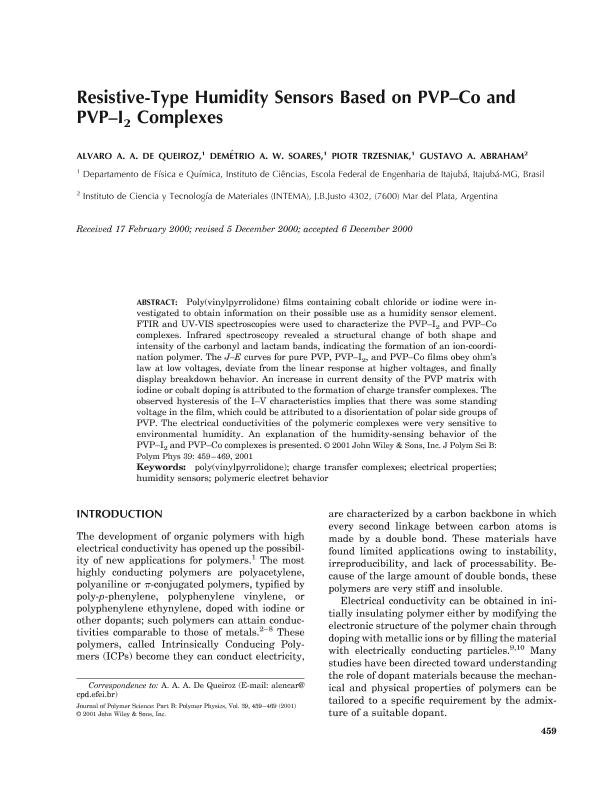Artículo
Resistive-type humidity sensors based on PVP–Co and PVP–I2 complexes
Fecha de publicación:
11/01/2001
Editorial:
John Wiley & Sons Inc
Revista:
Journal of Polymer Science Part B: Polymer Physics
ISSN:
0887-6266
Idioma:
Inglés
Tipo de recurso:
Artículo publicado
Clasificación temática:
Resumen
Poly(vinylpyrrolidone) films containing cobalt chloride or iodine were investigated to obtain information on their possible use as a humidity sensor element. FTIR and UV-VIS spectroscopies were used to characterize the PVP–I2 and PVP–Co complexes. Infrared spectroscopy revealed a structural change of both shape and intensity of the carbonyl and lactam bands, indicating the formation of an ion-coordination polymer. The J–E curves for pure PVP, PVP–I2, and PVP–Co films obey ohm's law at low voltages, deviate from the linear response at higher voltages, and finally display breakdown behavior. An increase in current density of the PVP matrix with iodine or cobalt doping is attributed to the formation of charge transfer complexes. The observed hysteresis of the I–V characteristics implies that there was some standing voltage in the film, which could be attributed to a disorientation of polar side groups of PVP. The electrical conductivities of the polymeric complexes were very sensitive to environmental humidity. An explanation of the humidity-sensing behavior of the PVP–I2 and PVP–Co complexes is presented.
Archivos asociados
Licencia
Identificadores
Colecciones
Articulos(INTEMA)
Articulos de INST.DE INV.EN CIENCIA Y TECNOL.MATERIALES (I)
Articulos de INST.DE INV.EN CIENCIA Y TECNOL.MATERIALES (I)
Citación
De Queiroz, Angel A.A.; Soares, Demetrio A.W.; Tresniack, P.; Abraham, Gustavo Abel; Resistive-type humidity sensors based on PVP–Co and PVP–I2 complexes; John Wiley & Sons Inc; Journal of Polymer Science Part B: Polymer Physics; 39; 4; 11-1-2001; 459-469
Compartir
Altmétricas




